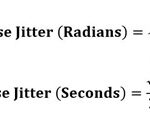What is a High Signal-to-Noise Ratio (SNR)?
Signal-to-Noise Ratio (SNR) is a measure used in telecommunications to quantify the quality of a signal compared to the level of background noise. In simple terms, it tells you how clear or strong your signal is relative to the unwanted noise. A high SNR means that the signal strength is significantly higher than the noise, which results in better signal quality and overall performance of the communication system.
Understanding SNR
The SNR is usually expressed in decibels (dB) and can be calculated using the formula:
SNR = 10 * log10(P_signal / P_noise)
Where:
- P_signal: The power of the signal being transmitted.
- P_noise: The power of the background noise.
If the ratio is high, it indicates a stronger and clearer signal, which means fewer errors and higher data transmission quality. If the ratio is low, it means the noise level is closer to the signal, leading to interference and poorer performance.
What Does a High SNR Mean?
A high SNR indicates a few important things in your system:
- Better Quality: With a higher SNR, your device will receive clearer signals, leading to improved voice, video, and data transmission quality. In telecom, this could result in better call quality, faster data speeds, and reduced interference.
- Higher Data Rates: A high SNR allows for faster data transmission because the channel is less affected by noise, enabling the system to transmit more data in a given amount of time.
- Fewer Errors: With a clearer signal, there are fewer chances of data being corrupted or lost, which means fewer retransmissions are required and better overall reliability of the system.
Examples of High SNR
In various wireless communication systems, having a high SNR is desirable. For example:
- Cellular Networks: In LTE or 5G networks, a high SNR ensures that your mobile device can maintain fast and reliable connections, enabling seamless streaming, browsing, and voice communication.
- Wi-Fi: A higher SNR in Wi-Fi networks leads to faster and more stable internet connections with minimal buffering or disruptions.
- Satellite Communication: A high SNR is crucial in satellite links to ensure that data is transmitted without significant loss or degradation.
How to Achieve High SNR?
There are several ways to improve SNR in a network or communication system:
- Increase Signal Power: Boosting the power of the transmitted signal can help improve the SNR, especially in areas with weak signal strength.
- Reduce Noise: Using better equipment, such as filters or noise-canceling technologies, can help minimize the amount of unwanted noise in the system.
- Optimize Antennas: The placement and type of antennas used can also impact the SNR. Directional antennas or antennas placed in optimal locations can focus the signal and reduce interference.
Conclusion
In conclusion, a high Signal-to-Noise Ratio (SNR) indicates that the signal is significantly stronger than the noise, leading to better quality, faster data rates, and fewer errors in communication systems. Achieving a high SNR is crucial in maintaining high-quality services, whether it’s in mobile networks, Wi-Fi, or satellite communication. By focusing on reducing noise and improving signal strength, you can ensure a more reliable and efficient communication experience.


